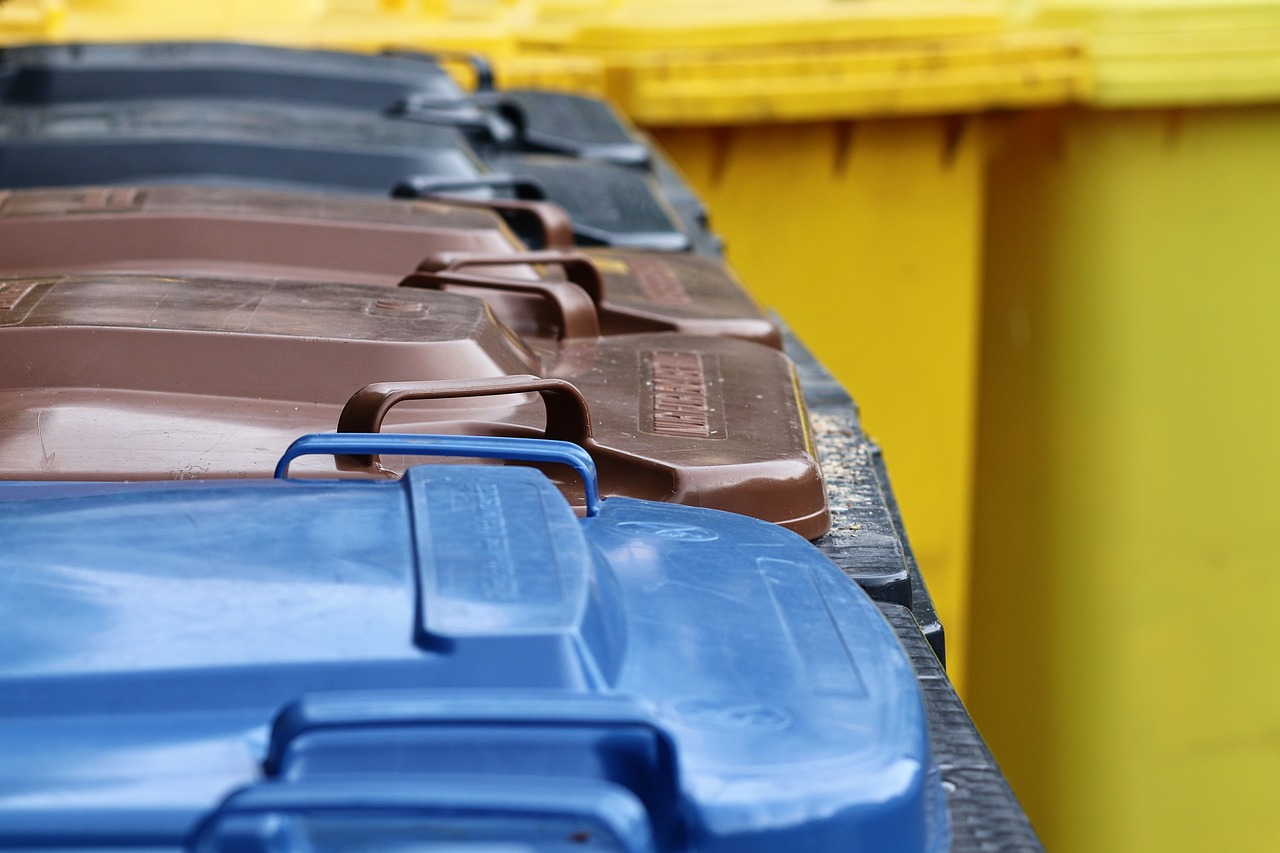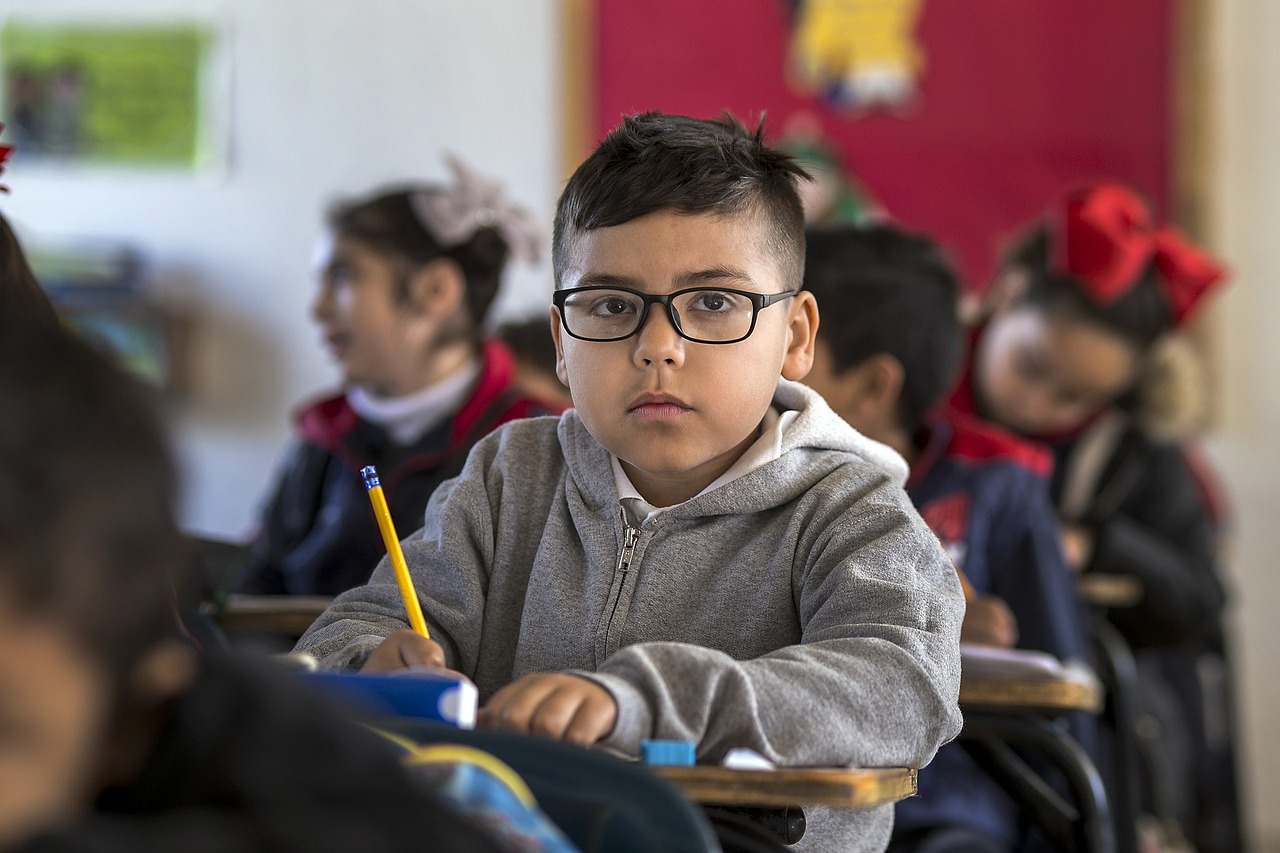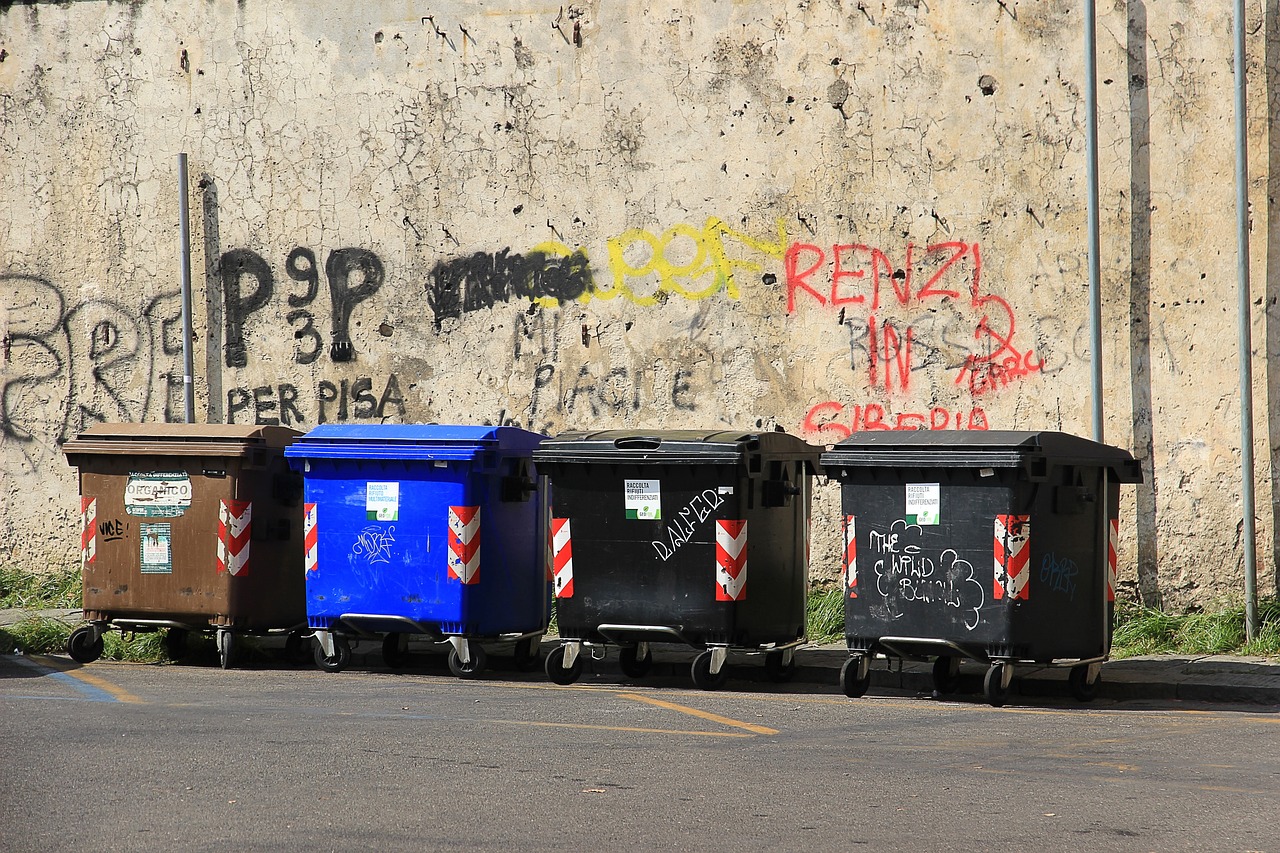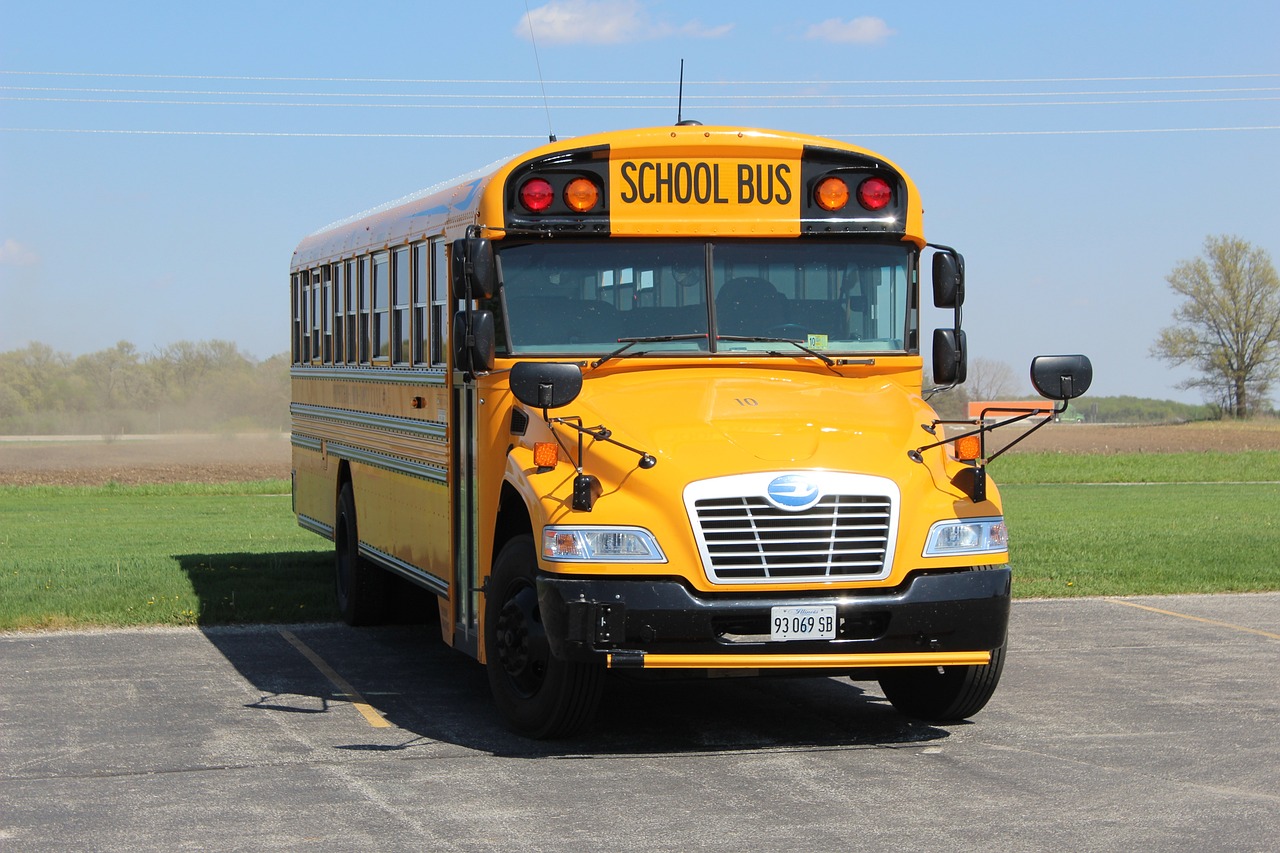How to Encourage Waste Reduction in Schools?
In today's world, where environmental concerns are at the forefront, schools have a pivotal role to play in promoting sustainability and reducing waste. Encouraging waste reduction in educational institutions is not just a trend; it's a necessity. Imagine a school where every student is aware of their environmental footprint, actively participating in initiatives that minimize waste, and fostering a culture of sustainability. This vision can become a reality through effective strategies and collective efforts. By implementing waste reduction techniques, schools can not only save money but also teach students valuable lessons about responsibility and stewardship of the planet.
One of the most effective ways to kickstart this movement is by integrating waste reduction into the school curriculum. Educators can introduce lessons on the importance of sustainability, the impact of waste on the environment, and practical steps students can take to minimize their waste. For instance, discussions on the lifecycle of products and the concept of "reduce, reuse, recycle" can empower students to make conscious choices. Moreover, incorporating hands-on activities, such as creating art from recyclable materials or organizing clean-up drives, can ignite enthusiasm and commitment among students.
Another vital aspect of encouraging waste reduction is to involve the entire school community. This includes not just students but also teachers, staff, and parents. By fostering a collaborative environment, schools can create a united front against waste. For example, hosting workshops or informational sessions can educate parents about the importance of waste reduction at home, reinforcing the lessons learned at school. Furthermore, schools can establish partnerships with local organizations to promote community-wide initiatives, such as neighborhood clean-ups or recycling drives, thus extending the impact beyond school grounds.
Additionally, creating visible reminders around the school can serve as constant nudges for students and staff alike. Simple posters with catchy slogans like "Every Piece Counts!" or "Waste Less, Live More!" can be strategically placed in hallways and classrooms. These reminders can keep the message alive and encourage everyone to think twice before discarding items. Moreover, schools can set up dedicated recycling stations with clear signage to make it easy for everyone to participate. By providing the right tools and information, schools can create an environment conducive to waste reduction.
As we dive deeper into the topic, it's essential to recognize that encouraging waste reduction is not just about implementing policies; it's about fostering a culture. Schools can celebrate "Waste Reduction Week," where various activities and competitions are organized to engage students. For instance, classes can compete to see who can produce the least amount of waste or come up with the most creative recycling projects. These fun and interactive events can spark excitement and a sense of ownership among students, making them more likely to adopt sustainable practices in their daily lives.
Ultimately, the journey towards waste reduction in schools is a collective effort that requires commitment, creativity, and collaboration. By involving students, educating staff, and engaging the community, schools can lead the charge in promoting sustainability. Remember, every small action counts, and together, we can make a significant impact on our planet's future.
- Why is waste reduction important in schools? Waste reduction is crucial in schools as it promotes environmental sustainability, teaches students responsibility, and can lead to cost savings for the school.
- How can students get involved in waste reduction efforts? Students can participate by joining clubs focused on sustainability, organizing clean-up events, or creating awareness campaigns within the school.
- What are some easy ways to reduce waste in schools? Simple actions like using reusable containers, reducing paper usage, and recycling can significantly contribute to waste reduction efforts.

Understanding the Importance of Waste Reduction
Waste reduction in schools is not just a trendy topic; it’s a critical necessity for fostering a sustainable future. Every day, educational institutions generate a staggering amount of waste, from food scraps in cafeterias to discarded paper and plastic products. By understanding the importance of waste reduction, we can begin to appreciate the broader implications of our actions on the environment. Imagine a world where our schools not only educate our children but also serve as beacons of sustainability. This vision can become a reality through dedicated efforts to minimize waste.
First, let's consider the environmental impact of waste. When we throw items away, they often end up in landfills, where they take years, if not centuries, to decompose. During this process, they release harmful greenhouse gases, contributing to climate change. Furthermore, the production of these items requires natural resources, energy, and labor, which all leave a significant carbon footprint. By actively working to reduce waste, schools can play a pivotal role in mitigating these environmental challenges.
Moreover, waste reduction teaches students valuable lessons about responsibility and stewardship. When students engage in waste management practices, they learn to take ownership of their environment. It’s like planting a seed; with proper care and attention, that seed grows into a strong tree that provides shade and shelter for future generations. By instilling these values early on, we prepare our youth to become environmentally conscious adults who will carry these lessons into their communities.
Additionally, reducing waste can lead to significant cost savings for schools. Less waste means lower disposal fees and reduced purchasing costs for materials. Schools can redirect these savings towards educational programs, extracurricular activities, or facility improvements. It's a win-win situation! Not only do we protect the environment, but we also enhance the quality of education.
To truly grasp the importance of waste reduction, we must also consider its impact on community health. Waste often attracts pests and can lead to unsanitary conditions, which can affect student health and well-being. By implementing effective waste reduction strategies, schools can create a cleaner, healthier learning environment. This is crucial, especially in the context of the ongoing global health challenges we face today.
In summary, understanding the importance of waste reduction in schools is about recognizing our role in the larger ecosystem. It’s about educating our students, saving money, and fostering a healthier community. As we move forward, let’s embrace the challenge of waste reduction as an opportunity for growth and positive change.

Developing a Waste Reduction Policy
Creating a formal waste reduction policy is like laying down the foundation for a sustainable future in schools. It serves as a roadmap, guiding educators, students, and administrators towards minimizing waste and fostering a culture of sustainability. But what exactly should go into this policy? It’s essential to consider several key elements that will not only make the policy effective but also relevant to the unique environment of each school.
First and foremost, the policy should outline specific goals and objectives. For example, schools might aim to reduce waste by a certain percentage over a defined period. These goals should be realistic yet ambitious, pushing the community to strive for continuous improvement. Additionally, the policy should include measurable outcomes that can be tracked over time, allowing schools to assess their progress and make necessary adjustments. Think of it as a fitness plan: you need to set achievable targets to see real results.
Another crucial aspect is the involvement of various stakeholders in the policy-making process. This means not just educators but also students, parents, and even local community members should have a voice. Engaging these groups can lead to a more comprehensive understanding of the challenges and opportunities related to waste reduction. When everyone feels included, the policy is more likely to be embraced and followed. It’s like throwing a potluck dinner; everyone brings something to the table, and together, you create a feast of ideas and solutions.
Moreover, the policy should address education and training. It’s not enough to just set rules; schools must also provide the necessary resources and training to help everyone understand their roles in waste reduction. This could include workshops, informational sessions, and even hands-on activities that demonstrate sustainable practices. By equipping students and staff with the right knowledge, schools can create a more informed community that actively participates in waste reduction efforts.
To further enhance the policy, it might be beneficial to establish a monitoring and evaluation system. This system can track the effectiveness of various initiatives and provide insights into what’s working and what isn’t. Regular assessments can help schools stay on track and make data-driven decisions to improve their strategies. A simple table could be used to present this data clearly:
| Initiative | Target Reduction (%) | Actual Reduction (%) | Comments |
|---|---|---|---|
| Recycling Program | 30 | 25 | Needs improvement |
| Composting | 20 | 15 | On track |
| Paperless Initiatives | 40 | 35 | Successful |
Lastly, it’s crucial for schools to remain adaptable. The landscape of waste management is constantly evolving, and what works today might not work tomorrow. A good waste reduction policy should include provisions for regular reviews and updates, ensuring that it remains relevant and effective over time. Think of it as tuning a musical instrument; you need to make adjustments to keep everything in harmony.
In summary, developing a waste reduction policy is not just about reducing trash; it's about creating a culture of sustainability that involves everyone in the school community. By setting clear goals, involving stakeholders, providing education, and establishing monitoring systems, schools can make significant strides toward a greener future. After all, every little action counts, and together, we can make a big difference!

Involving Students in Policy Creation
When it comes to fostering a culture of sustainability within schools, involving students in the policy creation process is not just beneficial; it's essential. Why? Because when students have a say in the rules that govern their environment, they are more likely to take ownership and responsibility for their actions. This sense of ownership transforms waste reduction from a mere requirement into a personal mission.
Imagine a scenario where students are actively engaged in discussions about waste reduction policies. They brainstorm ideas, express their concerns, and propose solutions. This collaborative approach not only empowers students but also encourages them to think critically about their consumption habits. For instance, a student might suggest implementing a "Waste-Free Lunch Day" where everyone brings meals in reusable containers. Such initiatives can spark interest and lead to long-term behavioral changes.
Moreover, when students are involved in policy creation, they can provide unique insights that teachers and administrators might overlook. They understand their peers better and can identify practical strategies that resonate with their generation. For example, students might advocate for the use of digital platforms to reduce paper waste, suggesting a shift to online assignments and communications. This not only cuts down on paper usage but also aligns with their tech-savvy lifestyle.
To effectively involve students, schools can establish student committees dedicated to sustainability. These committees can host regular meetings to discuss ongoing waste management efforts, gather feedback, and propose new initiatives. This not only cultivates leadership skills among students but also creates a platform where their voices are heard. Schools can also organize workshops where students learn about the environmental impact of waste and the importance of sustainable practices.
Furthermore, schools can utilize surveys and suggestion boxes to gather input from the student body. This allows students who may be shy or hesitant to speak up in meetings to share their ideas and concerns anonymously. Regularly reviewing this feedback can help schools adapt their policies to better suit the needs and preferences of the students.
In summary, involving students in the policy creation process is a win-win situation. It not only enhances the effectiveness of waste reduction strategies but also empowers students to become advocates for sustainability. By giving them a voice, schools can cultivate a generation of environmentally conscious individuals who are committed to making a difference.
Q: Why is student involvement important in waste reduction policies?
A: Student involvement fosters ownership and responsibility, making them more likely to engage in sustainable practices.
Q: How can schools gather student feedback on waste reduction initiatives?
A: Schools can use surveys, suggestion boxes, or establish student committees to facilitate open communication and gather input.
Q: What are some examples of student-led initiatives for waste reduction?
A: Initiatives can include organizing "Waste-Free Lunch Days," creating recycling awareness campaigns, or proposing digital assignments to reduce paper waste.

Student-Led Initiatives
When it comes to promoting waste reduction in schools, can be a game-changer. Imagine a school where students take the reins, driving the movement towards sustainability. Not only does this empower them, but it also creates a vibrant community dedicated to making a difference. Engaging students in these initiatives fosters a sense of ownership and responsibility, making them more likely to commit to sustainable practices.
One successful example is the creation of a Green Team. This group, composed of passionate students, can spearhead various projects aimed at reducing waste. From organizing recycling drives to launching campaigns that encourage the use of reusable containers, the possibilities are endless. By actively participating in these initiatives, students learn valuable skills such as leadership, teamwork, and project management. It’s like giving them a mini-MBA in sustainability!
Another effective initiative is the establishment of a Waste Audit. Students can conduct audits to assess the types and amounts of waste generated in their school. This hands-on experience not only raises awareness about waste production but also helps identify specific areas for improvement. After analyzing the data, the students can present their findings to the school administration, proposing actionable solutions tailored to their unique environment.
Moreover, competitions can be a fun and engaging way to inspire students to participate. For instance, a "Zero Waste Challenge" can encourage classrooms to minimize waste over a month, with rewards for the classrooms that achieve the greatest reductions. This friendly competition not only motivates students but also fosters camaraderie as they work together towards a common goal.
To further enhance these initiatives, schools can partner with local organizations and businesses. Collaborating with community members creates a support network that can provide resources, mentorship, and even funding for student-led projects. For example, local recycling companies might offer workshops on proper recycling techniques, while businesses can sponsor events that promote sustainability.
In conclusion, student-led initiatives not only contribute significantly to waste reduction but also cultivate a culture of sustainability within schools. By empowering students to take action, schools can foster a generation of environmentally conscious individuals who are equipped to tackle the challenges of waste management in their communities.

Feedback Mechanisms for Students
Implementing feedback mechanisms in schools is not just a good idea; it's essential for fostering a culture of sustainability and responsibility among students. When students feel that their voices matter, they are more likely to engage actively in waste reduction initiatives. So, how can schools create effective feedback channels? The answer lies in a combination of traditional and innovative approaches that encourage open communication.
One effective method is to establish regular feedback sessions where students can express their thoughts and suggestions regarding waste management policies. These sessions could take place monthly or quarterly and could be structured as informal gatherings or formal meetings. The key is to create a safe space where students feel comfortable sharing their opinions. Imagine a roundtable discussion where ideas flow freely—this kind of environment can spark creativity and enthusiasm around waste reduction efforts.
Additionally, schools can utilize digital platforms to gather feedback. Online surveys or suggestion boxes can be set up to allow students to submit their ideas anonymously. This anonymity can encourage more honest and constructive feedback, as students may feel less hesitant to voice their concerns or suggestions. For instance, a simple online survey could ask questions like:
| Question | Response Type |
|---|---|
| What do you think about our current recycling program? | Open-ended |
| How often do you see recycling bins overflowing? | Multiple choice (Never, Sometimes, Often) |
| What new initiatives would you like to see? | Open-ended |
Furthermore, integrating feedback into the curriculum can also enhance student engagement. For example, teachers can assign projects that require students to analyze the effectiveness of current waste reduction strategies and propose improvements. This not only empowers students to take ownership of the initiatives but also teaches them valuable skills in research and critical thinking.
Lastly, it’s vital for schools to act on the feedback they receive. When students see that their opinions lead to real changes, it reinforces the importance of their participation in the waste reduction process. Schools can share updates on how student feedback has influenced policies through newsletters or announcements, creating a sense of community and shared responsibility.
In summary, establishing robust feedback mechanisms is a powerful way to engage students in waste reduction efforts. By providing various channels for communication, schools can ensure that students feel heard and valued, leading to more effective and impactful sustainability initiatives.
- Why is student feedback important for waste reduction? Student feedback is crucial as it provides insights into how policies are perceived and can lead to improvements that increase participation and effectiveness.
- What are some effective ways to collect feedback? Schools can use surveys, suggestion boxes, and feedback sessions to gather student opinions and suggestions.
- How can feedback lead to real changes in waste management policies? When schools act on the feedback received, it demonstrates to students that their voices matter, which can motivate them to engage more actively in sustainability efforts.

Training and Educating Staff
When it comes to promoting waste reduction in schools, educators play a crucial role. They are not just teachers; they are mentors, guides, and sometimes, the first line of defense against environmental negligence. Training and educating staff about sustainable practices can create a ripple effect that influences the entire school community. Imagine a scenario where every teacher not only teaches their subjects but also integrates sustainability into their lessons. This approach can transform classrooms into hubs of environmental awareness.
To start, schools should implement comprehensive training programs that focus on the principles of waste reduction. These programs can cover various topics, including the importance of recycling, composting, and reducing single-use plastics. By equipping staff with the right knowledge and tools, schools can foster an environment where sustainability becomes second nature. For instance, consider a workshop that highlights the impact of waste on local ecosystems. Such sessions can spark conversations and inspire educators to incorporate these themes into their teaching.
Furthermore, ongoing education is vital. It’s not enough to have a one-time training session; sustainability is an ever-evolving field. Regular updates and refresher courses can keep staff informed about the latest practices and innovations in waste management. Schools could establish a sustainability committee that meets quarterly to discuss new strategies, share successes, and tackle challenges. This committee could also serve as a platform for staff to exchange ideas and collaborate on projects that promote waste reduction.
Additionally, it’s essential to provide educators with practical resources. This could include educational materials like pamphlets, guides, and online resources that outline effective waste management strategies. Schools can also set up a digital platform where staff can access training videos, case studies, and success stories from other institutions. By creating a repository of information, educators can continually learn and apply new techniques in their classrooms.
Moreover, engaging staff in hands-on activities can significantly enhance their understanding of waste reduction. For example, organizing a school-wide clean-up day or a recycling challenge can be both educational and fun. These activities not only raise awareness but also foster teamwork and camaraderie among staff. When educators actively participate in waste reduction initiatives, they become role models for students, demonstrating the importance of taking action.
Lastly, it’s crucial to create a culture of sustainability within the school. This means recognizing and celebrating the efforts of staff who excel in promoting waste reduction. Schools can implement recognition programs that reward teachers for their innovative approaches to sustainability. A simple acknowledgment can motivate staff to continue their efforts and inspire others to follow suit.
In summary, training and educating staff is a fundamental step in encouraging waste reduction in schools. By providing comprehensive training, ongoing education, practical resources, hands-on activities, and fostering a culture of sustainability, schools can empower educators to lead by example. When teachers are equipped with the knowledge and tools, they can inspire students to take ownership of their environmental impact, ultimately creating a more sustainable future.
- Why is staff training important for waste reduction?
Staff training equips educators with the necessary knowledge and tools to promote sustainable practices, which can influence students and the entire school community. - What topics should be included in staff training?
Topics can include recycling, composting, reducing single-use plastics, and the environmental impact of waste. - How can schools ensure ongoing education for staff?
Schools can establish sustainability committees, provide regular updates, and offer refresher courses to keep staff informed about new practices. - What are some hands-on activities for staff?
Organizing school-wide clean-up days and recycling challenges can engage staff and enhance their understanding of waste reduction.

Implementing Recycling Programs
Implementing effective recycling programs in schools is not just a trend; it’s a necessity! With the growing concern over environmental issues, schools have a unique opportunity to lead the charge in waste reduction. By establishing robust recycling initiatives, educational institutions can significantly reduce the amount of waste they generate, while also instilling a sense of responsibility in students. Imagine walking through a school where recycling bins are as common as water fountains—this vision can become a reality with the right approach.
To kickstart a successful recycling program, it’s essential to first identify what materials can be effectively recycled. Schools typically generate a variety of recyclable materials, including:
- Paper products (notebooks, printer paper, etc.)
- Plastic containers (bottles, lunch containers)
- Aluminum cans (soda cans, food containers)
- Cardboard (boxes from deliveries or classroom supplies)
Once these materials are identified, the next step is to educate both students and staff on how to properly dispose of these items. This can be achieved through workshops, informational posters, and even fun competitions that encourage participation. Think of it as a scavenger hunt where the prize is a cleaner planet!
Monitoring the success of recycling programs is equally important. Schools should establish a system to track how much waste is being diverted from landfills through recycling efforts. This could involve keeping records of the volume of recyclables collected over time, which can be displayed on bulletin boards or shared in school newsletters. Not only does this data provide insight into the program's effectiveness, but it also helps motivate students and staff to stay engaged. After all, who doesn’t love seeing tangible results from their efforts?
Furthermore, schools can enhance the effectiveness of their recycling programs by collaborating with local recycling facilities. Building partnerships with these organizations can provide schools with resources, such as bins and educational materials, while also ensuring that the recyclables are processed correctly. It’s a win-win situation that benefits both the school and the community!
In conclusion, implementing recycling programs in schools is a multifaceted endeavor that requires planning, education, and ongoing assessment. By taking these steps, schools can not only reduce waste but also cultivate a culture of sustainability that will resonate with students for years to come. Remember, every small effort counts, and together, we can make a significant impact!
Q: What materials can be recycled in schools?
A: Common recyclable materials in schools include paper, plastics, aluminum cans, and cardboard. It's essential to educate students on what can and cannot be recycled.
Q: How can we encourage students to participate in recycling programs?
A: Engaging students through competitions, informative workshops, and visual reminders can motivate them to participate actively in recycling initiatives.
Q: How can we measure the success of our recycling program?
A: Schools can track the volume of recyclables collected over time and share this data with the school community to highlight the program's success and encourage continued participation.
Q: Can we partner with local recycling facilities?
A: Yes! Collaborating with local recycling facilities can provide schools with valuable resources and ensure that the recyclables are processed correctly.

Choosing Recyclable Materials
When it comes to waste reduction in schools, one of the most critical steps is . It might seem like a straightforward task, but understanding what can and cannot be recycled is essential for making a real impact. Imagine your school as a living organism; every recyclable item is like a nutrient that helps it thrive, while non-recyclable waste acts as a toxin that could harm its health. Therefore, educating both students and staff about recyclable materials is vital for fostering a culture of sustainability.
First and foremost, it's important to recognize that not all materials are created equal. For instance, items like paper, cardboard, glass, certain plastics, and metals are typically recyclable. However, the specifics can vary depending on local recycling guidelines. To simplify this process, schools can create a visual guide, perhaps a poster or a digital infographic, detailing what can be recycled. This guide can serve as a quick reference for students and staff alike. Here’s a simple breakdown:
| Material Type | Recyclable? | Notes |
|---|---|---|
| Paper | Yes | Clean paper products only; avoid greasy or soiled paper. |
| Cardboard | Yes | Flatten boxes to save space. |
| Glass | Yes | Rinse before recycling; check local guidelines for colors. |
| Plastics (#1 and #2) | Yes | Check for recycling symbols; clean before recycling. |
| Metals (Aluminum, Steel) | Yes | Rinse cans before recycling. |
| Food Waste | No | Consider composting instead. |
Furthermore, schools can implement fun and engaging activities to encourage the recycling of these materials. For instance, organizing a recycling contest can motivate students to bring in recyclables from home. This not only raises awareness but also fosters a sense of community and teamwork. When students see their efforts contributing to a greater cause, they’re more likely to embrace sustainable practices.
In addition to educating students about what can be recycled, it’s also crucial to discuss the importance of clean recycling. Contaminated recyclable materials can lead to entire batches being sent to landfills instead of being processed. This is where the role of teachers and staff becomes vital. They can lead by example, ensuring that they dispose of recyclable materials correctly and encouraging students to do the same. By making recycling a shared responsibility, schools can cultivate an environment where everyone feels accountable for their waste.
Lastly, schools should regularly review and update their recycling programs. As new materials become recyclable and guidelines change, staying informed will help maintain an effective waste reduction strategy. Encourage feedback from students and staff about the recycling process. This not only helps in identifying areas for improvement but also fosters a culture of continuous learning and adaptation.
In conclusion, choosing recyclable materials in schools is not just about what goes into the recycling bin; it’s about creating a culture of sustainability that empowers everyone to contribute. By educating the school community, providing clear guidelines, and making recycling a fun and engaging activity, schools can significantly reduce their waste footprint and inspire future generations to be more environmentally conscious.

Monitoring Recycling Efforts
Monitoring recycling efforts in schools is not just a matter of counting bins; it’s about creating a culture of sustainability that resonates throughout the entire educational environment. Schools can implement various strategies to keep track of their recycling initiatives and ensure they are effective. By establishing clear metrics for success, schools can not only measure their progress but also inspire students and staff to remain engaged in their waste reduction efforts.
One effective approach to monitoring is to set specific, measurable goals for recycling programs. For instance, a school might aim to increase its recycling rate by 20% over the course of a year. To achieve this, schools can utilize a variety of tracking methods, such as:
- Regular Waste Audits: Conducting waste audits allows schools to assess the amount and type of waste generated and how much of it is being recycled. This data can help identify areas for improvement.
- Recycling Bin Monitoring: Keeping track of how often recycling bins are emptied can provide insights into the volume of recyclable materials being collected.
- Student and Staff Surveys: Gathering feedback through surveys can help schools understand how well the recycling program is understood and followed by the community.
In addition to these methods, schools should consider creating a centralized tracking system where data can be collected and analyzed. This could be as simple as a spreadsheet that logs the amount of recyclables collected each month, or as sophisticated as a dedicated software program designed for waste management. The key is to ensure that this data is easily accessible and regularly updated, allowing for quick adjustments to be made based on the findings.
Moreover, sharing the results of these monitoring efforts with the entire school community can significantly boost morale and participation. Schools can use newsletters, bulletin boards, or even social media to highlight successes and areas needing improvement. For example, a school might celebrate reaching its recycling goal by organizing a fun event or competition, thus fostering a sense of community and shared responsibility.
Ultimately, the goal of monitoring recycling efforts is not just to achieve numbers but to cultivate an ongoing commitment to sustainability within the school. By continuously assessing and adjusting their recycling programs, schools can create a dynamic environment where waste reduction becomes a shared value, leading to lasting change in habits and attitudes among students and staff alike.
Q1: How often should we conduct waste audits?
A1: It’s recommended to conduct waste audits at least once a semester to get a clear picture of waste generation and recycling rates. This frequency allows for timely adjustments to be made in the recycling program.
Q2: What should we do if our recycling rates are low?
A2: If recycling rates are low, consider increasing educational efforts about what can be recycled, improving the visibility of recycling bins, or even hosting a recycling awareness campaign to engage students and staff.
Q3: Can students help in monitoring recycling efforts?
A3: Absolutely! Involving students in monitoring activities can foster a sense of ownership and responsibility. They can participate in waste audits, create reports, or help manage recycling competitions.
Frequently Asked Questions
- Why is waste reduction important in schools?
Waste reduction in schools is crucial because it helps minimize the environmental impact of waste. By reducing waste, schools can conserve resources, lower their carbon footprint, and promote sustainability among students. It's about creating a culture of responsibility and awareness that extends beyond the classroom.
- How can students get involved in waste reduction efforts?
Students can play a significant role in waste reduction by participating in or leading initiatives like recycling programs, clean-up drives, or awareness campaigns. Engaging students in policy creation also fosters a sense of ownership, making them more likely to support and promote sustainable practices.
- What are some effective strategies for developing a waste reduction policy?
When developing a waste reduction policy, consider involving various stakeholders, including students, staff, and parents. Key elements to include are clear goals, guidelines for waste management, and methods for monitoring progress. A well-structured policy can guide the school's sustainability efforts effectively.
- What types of materials can be recycled in schools?
Schools can recycle a variety of materials, including paper, cardboard, plastics, and metals. It's important to educate the school community about what can and cannot be recycled, ensuring proper disposal and reducing contamination in recycling bins.
- How can schools monitor the success of their recycling programs?
Schools can monitor their recycling programs by tracking the volume of materials recycled, conducting waste audits, and gathering feedback from students and staff. Regular assessments can help identify areas for improvement and reinforce the importance of recycling efforts.
- What role do educators play in waste reduction initiatives?
Educators are vital in waste reduction initiatives as they can teach students about sustainability and model eco-friendly practices. Providing training and resources to staff empowers them to incorporate waste reduction into their curriculum and daily activities.
- How can feedback mechanisms improve waste reduction policies?
Implementing feedback mechanisms allows students and staff to share their thoughts on waste reduction policies and initiatives. This input can lead to more effective strategies, as it helps identify challenges and successes, fostering a collaborative environment for continuous improvement.



















